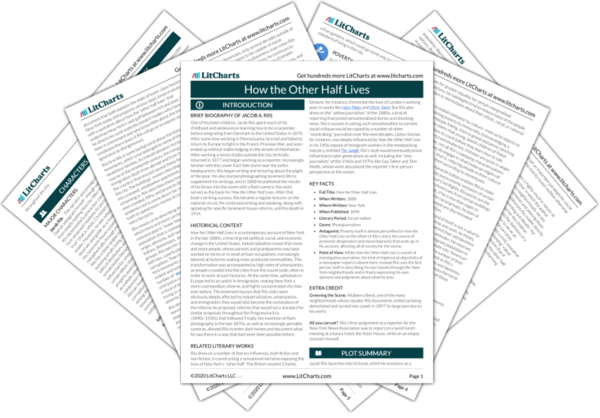LitCharts assigns a color and icon to each theme in How the Other Half Lives, which you can use to track the themes throughout the work.
Housing, Reform, and Improvement
Diversity, Cosmopolitanism, and Ethnic Prejudice
Photography and Visual Language
The Progressive Era and Immigration
